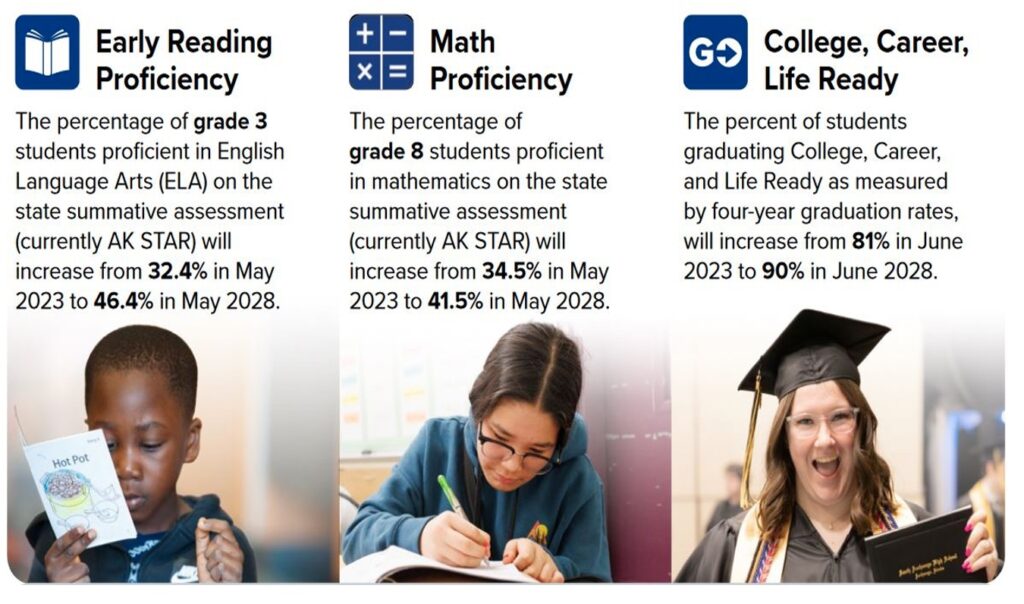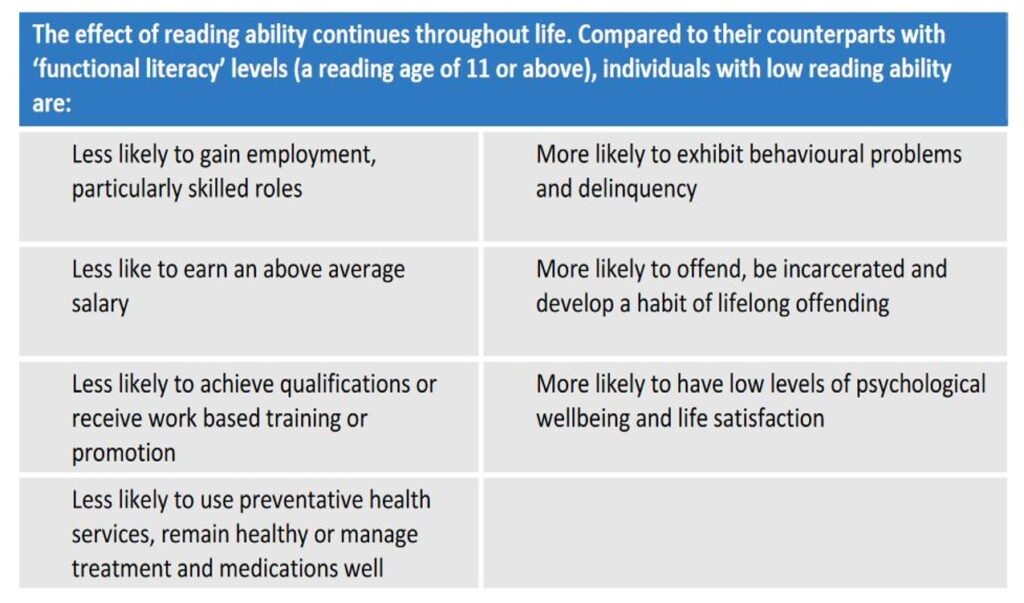
By DAVID BOYLE
At its recent mid-June retreat, the Anchorage School Board worked hard to set low goals for teaching students how to read and do math.
Watch the retreat session and listen to the discussion on YouTube:
It is encouraging that the school board has set achievement goals for its staff and students. Goals for math and reading should be basic for any school district.
The retreat recording was not initially posted, but at my request Board President Andy Holleman did work to ensure the recordings were posted on YouTube for the public to hear. You can fast-forward through it and hear different parts of the discussion and presentation, which is revealing. Listening to the discussion is helpful to understand why they set such low, yet achievable, goals.
Here are the reading, math and graduation goals set by the board:

What percentage of students do you believe should be able to read at grade level and what percentage of students should be proficient in math?
Shouldn’t at least 50% of our students be able to read by 3rd grade? Shouldn’t at least 50% of our students be able to do math by 8th grade?
From the goal graphic above, it doesn’t look like the district believes that.
The district’s goal is that only 46.4% of third-grade students should be able to read at grade level by 2028. That’s not aspirational. It would seem they looked for a low number they might be able to achieve so they could be successful.
Goals should be aspirational. When one challenges a child to meet a high goal, many students will reach that goal and excel. That leads to self-worth, pride, and further student encouragement.
So, if you enroll your child in the district’s kindergarten this year, chances are less than 50/50 that your child will be able to read at grade level by the time your child is ready for fourth grade.
What parent would take a less than 50% chance that their child could read by third grade?
That child will have a very difficult time succeeding in other subjects such as math, science and social studies if he/she/they/them cannot read.
The saying goes, “A child learns to read by 4th grade so she can read to learn thereafter.”
Here is a chart from The Centre for Education and Youth that shows the relationship between reading and success in life:

As you can see, the future does not bode well for those students who are less literate.
An even greater question is, “If a school district cannot teach a child to read, what is it teaching?”
But there is some good news. In the current 2023 AK STAR test less than one-third (32.4%) of ASD current 3rd grade students read at grade level. So, it is an improvement if 46.4% read at grade level by 2028.
But how many of these 3rd grade students will read at grade level in later grades?
The board also set math proficiency goals at its retreat. It believes that only 41.5% of its 2028 8th grade students should be proficient at math. That’s not aspirational either.
This spells doom for many students who like STEM (science, technology, engineering and math) classes.
Those 2028 8th grade students are today in the 5th grade. That student cohort scored 40% in math proficiency in 2023 in the AK STAR. This is just slightly below the goal set for them by the time they reach 8th grade.
But, once again, there is good news — sort of. In the 2023 AK STAR tests less than 35% of 8th graders were proficient in math. So, the district is hoping that the 2028 8th grade students will at least improve by six and a half percentage points.
Again, the question is, “If a school district cannot teach a child to do math, what is it teaching?”.
Finally, the Anchorage School District sets a graduation goal of 90% by 2028.
This presents a real contradiction: How can the graduation rate be so high if students cannot read at grade level and do math at grade level?
Maybe, just maybe, some of these students will not be able to read their diplomas.
It is clear that the district will probably achieve its very low goals. And it will declare success. But will students be able to achieve their goals? And will they be successful in life?



![Body temperature check, prevent virus Concepts in preventing contagious diseases. Corona virus [Covid-19] . social distancing concept.Operator Check Fever by Digital Thermometer Visitor](https://ak4pf.org/wp-content/uploads/2025/03/business-woman-covid-19-2024-10-18-05-28-48-utc-150x150.jpg)





![Body temperature check, prevent virus Concepts in preventing contagious diseases. Corona virus [Covid-19] . social distancing concept.Operator Check Fever by Digital Thermometer Visitor](https://ak4pf.org/wp-content/uploads/2025/03/business-woman-covid-19-2024-10-18-05-28-48-utc-300x196.jpg)


